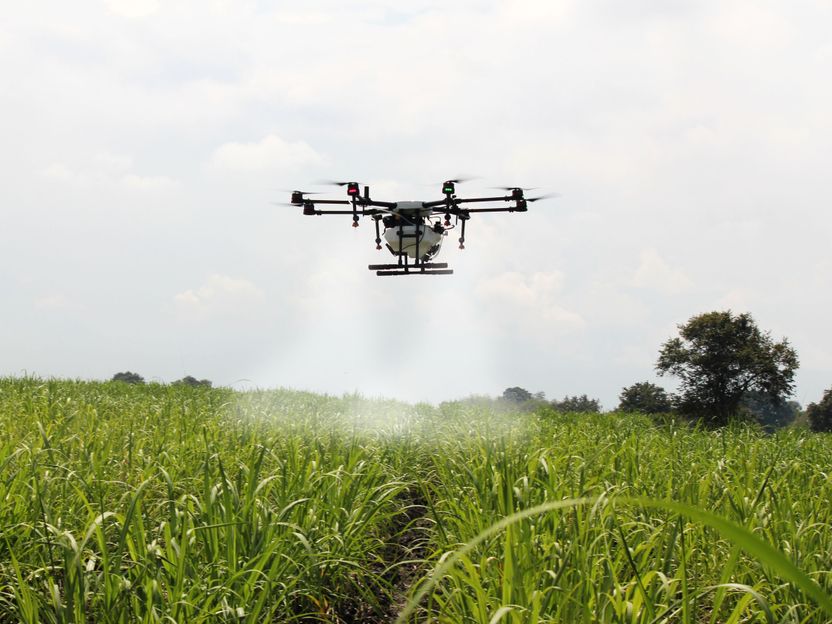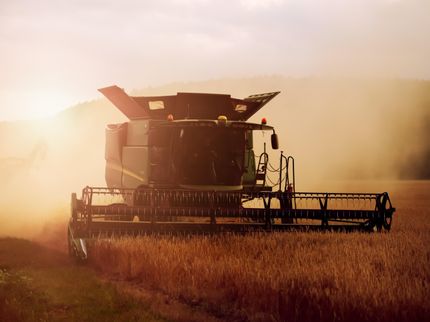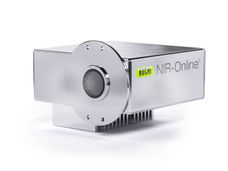Smarter Tech, Smarter Food
Proagrica Report Discusses if Advances in Technology Can Help Feed the World
Advertisement
A growing population across the globe is creating a mounting challenge for food producers. By the year 2050, the Food and agriculture Organization of the United Nations (FAO) predicts the global population will be 9.6 billion people – requiring a gigantic 70 percent increase in food production. Growers are also facing escalating pressure due to environmental constraints, including the limited availability of suitable land, the scarcity of fresh water and unpredictable weather patterns.

Bild von Herney Gómez auf Pixabay
For many, the forecast for food production looks troubling at best. There are, however, solutions developing to fill this gap. Advances in agricultural technology and smart data usage are making it possible for agronomists and local farmers to stay robust and productive against these challenges, improving their operations, enhancing crop yield, reducing water consumption and increasing profits.
In short: to feed the world, we need to rethink the supply chain. By making small realistic adjustments, growers and other agribusinesses can achieve substantial productive increases while deriving greater profitability from their outputs.
For growers, this means rethinking their place in the agriculture supply chain and how best to drive their business going forward. Partnering with technology companies and agronomists who understand both their challenges and their opportunities will become more and more critical to meeting the changing demands of the future and achieving business success.
Key problem areas for farms that can be transformed by smarter tech:
- Inability to quickly identify problem areas in existing crops.
- Inability to identify potential problems in new fields.
- Inaccurate annual processes that take many hours.
- Inconsistency in tracking information about crops and fields.
- Over-use of chemicals with a 'just in case' mentality.
- Use of the wrong chemicals or supplements due to a lack of information.
Smarter farming
One vital area that requires focus – while also offering lucrative opportunities – is that of efficiency. In modern times it's no longer viable for every aspect of farm management to be completed manually. Every day, farms generate a huge amount of data, but collecting that data is only the first step. To derive value from data, it's necessary to implement a solution that ultimately helps drive improvements and lifts farm performance.
"Data in itself is not enough," said Mr. William Richardson, Director of Training and Development for Proagrica, the leading independent provider of connectivity and data-led insight across the agriculture and animal health sectors. "You need to analyze that data to unlock its value. However, this can be an immense learning curve. You are not just talking about doing soil sampling or crop protection recommendations, you are talking about discovering something new."
"By utilizing the available data and combining precision planting and spraying techniques, growers are now able to operate more efficiently and more profitably, all while creating a lower environmental impact."
Smarter tech
We're currently undergoing nothing short of a technological revolution in agriculture. The drive towards precision farming and a greater focus on observing, measuring and responding to inter and intra-field variability in crops has meant great strides for the industry. Smart farming techniques and the use of data analytics are the current technologies creating a real step-change for farming. This has been aided by the significant uptake of mobile devices and the resulting faster wireless data transmission now available (though naturally this is not yet universal.) "With what we have today, you can wirelessly send information back to the office and that field can be treated the same day," said Mr. Richardson. "This is as near to real-time as possible. As a result, we can do much more on farm, in a way that seamlessly aids production, making it possible to be more reactive and adjustable in a way that just wasn't possible only a few years ago."
The most utilized smart farming tools of today include:
- Remote sensors
- Grid sampling
- Global Positioning Systems (GPS) & geographical information systems
- Variable rate technology
- Auto guidance equipment
- Proximate sensors
These technologies are widespread among farms, but there has been a push in recent years for standardized data between these disparate systems. Currently, farmers are required to enter data over and over into multiple applications. This is not just frustrating and time-consuming, but completely prevents these different applications working together to provide a holistic overview of the farm that will be successful and productive.
Standardized data offers the chance to effortlessly synchronize all data on farm, cutting down on man-hours, creating the opportunity for quick and easy training with new employees, fighting back better and faster against threats (such as weeds, insects, diseases, and crop damage) and, ultimately, driving higher yields.
"Efficiency is important, but standardization is key," said Mr. Richardson. "Standardizing the data allows the users to track and trend information over time, creating the opportunity to plan ahead for purchases and planting patterns. Businesses that adapt and are flexible to change are well-placed to thrive. Many are already heavily investing in data solutions, priming their business for this new era of data-based partnerships and customer service."
Standardized data doesn't just offer a huge boost to individual businesses' profitability but also cumulatively aids the industry in working smarter to deliver more. Smarter use of data is a necessary step to meet the food demands of tomorrow.
Smarter future
More and more in the industry are beginning to adapt their businesses to incorporate these newest advances in technology. Growers are realizing that change is required – and required soon – but these changes will also bring significant opportunities.
In the short-term, technology-driven improvements to daily farm operations will boost farmers' profits by cutting costs and increasing yields. In the longer run, these changes may help answer that increasingly urgent question: how can we feed the world's growing population without putting too much strain on the earth's natural resources?
































































